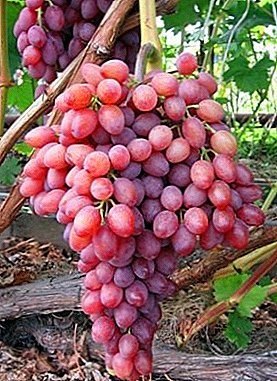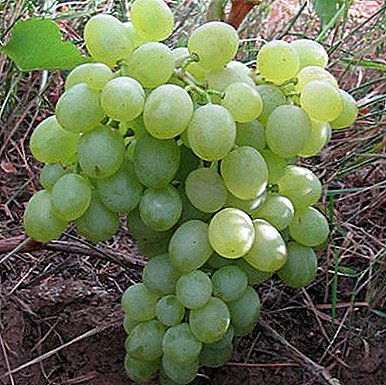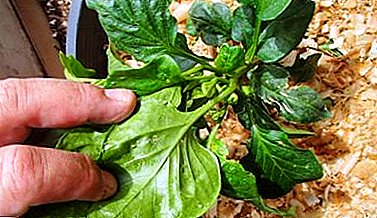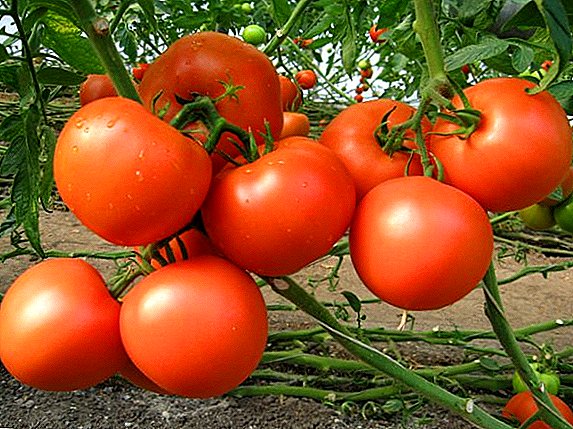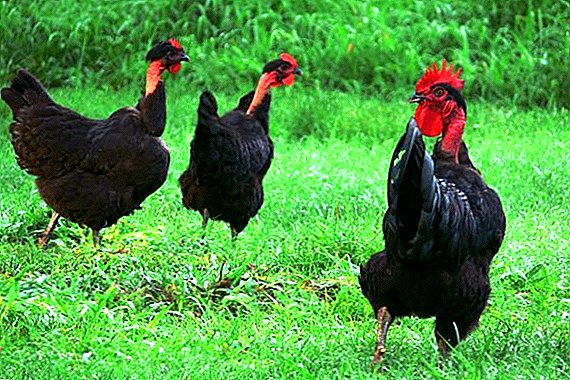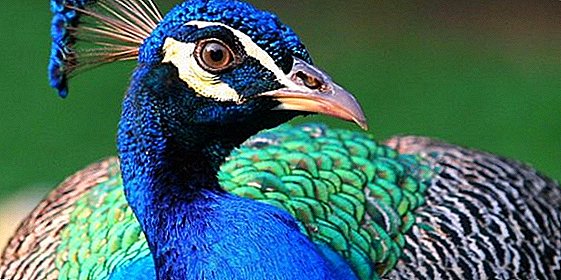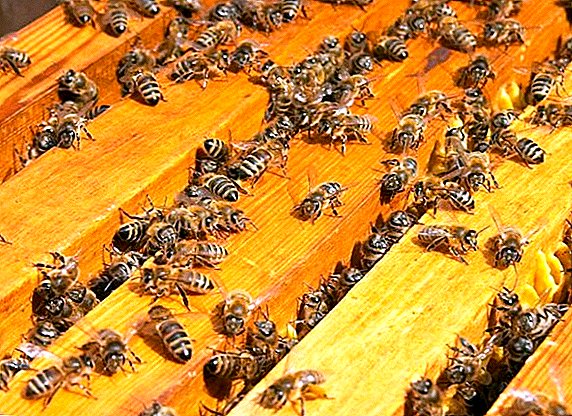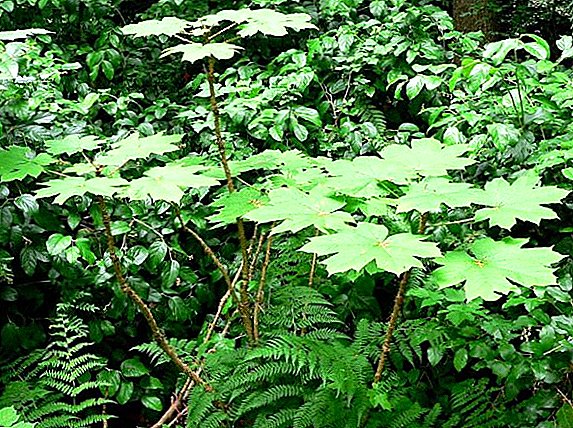 Mother Nature gave us many plants that can cure a variety of diseases, but we do not always know about their healing properties. In this article we will talk about one of these wonderful plants, which is known under the unusual name - "zamaniha". We learn how it looks and how to use it for medical purposes.
Mother Nature gave us many plants that can cure a variety of diseases, but we do not always know about their healing properties. In this article we will talk about one of these wonderful plants, which is known under the unusual name - "zamaniha". We learn how it looks and how to use it for medical purposes.
Botanical description
Zamaniha belongs to the Araliev family and has the appearance of a small bush. A characteristic feature of this plant is a long, creeping and woody root. The stem is erect, light brown, with needle leaves on it. The flowers are small, collected in an oblong spherical umbrella shape and have a yellowish-green shade. Zamanikha blooms in summer - in June-July. The fruits ripen by the end of summer or the beginning of autumn. 
Did you know? Bright red fruits of lures are visible from a great distance and attract with their appearance not only people, but also animals. It is for this property of its fruit that the shrub received such a name.Zamanihi growing area is quite large: it grows in North America, East Asia, in Russia, the Far East and in the Primorsky Territory. You can meet her in narrow gorges, coniferous forests, on steep stony slopes located above sea level.
Composition
Since zamanihu is used in traditional medicine, its chemical composition is well known. It includes the following substances:
- essential oils;
- glycosides;
- phenols;
- alcohols;
- free acids;
- hydrocarbons;
- aldehydes;
- coumarins;
- resinous compounds;
- flavonoids;
- saponins;
- echinoxosides;
- lignalins.
 In addition, the bait is very rich in micro and macro elements, which are very important for maintaining health:
In addition, the bait is very rich in micro and macro elements, which are very important for maintaining health:- calcium;
- zinc;
- iron;
- manganese;
- magnesium;
- potassium.
Did you know? In conventional medicine, a bailer is used as a substitute for ginseng, since their healing properties are very similar. Such a replacement may be needed in situations where a person for some reason cannot take drugs containing ginseng.
Indications for use
This medicinal plant kills pathogens, tones, relieves spasms and relieves tumors, and also thins the blood. Due to such properties, it can be shown:
- with hypotonic disease;
- depression and general depressed condition;
- poor performance;
- sleep disturbances;
- various inflammations;
- tumors, including malignant ones;
- disorders of the bowel and liver;
- sore throat and mouth;
- the presence of painful and inflamed wounds;
- diabetes mellitus (because this plant lowers blood sugar);
- asthenic syndrome in women after childbirth;
- menopause in women of mature age;
- atherosclerosis;
- fever and rheumatism;
- diseases of the central nervous system;
- decreased visual acuity;
- tuberculosis.

Medical recipes
For the preparation of medicinal decoctions, teas and tinctures use dried roots of the plant.
Find out more about such medicinal plants as: meer, three-leaf watch, walker, onosma, creeping gobbler, centaury, astragalus, bonfire, bedstraw, Lesopida, serpentine head, sedge, book fox, pike, umbrella of winter time, yasnotka and bison.
Tincture
To make the tincture, you need alcohol or vodka with a strength of 40 ° and crushed roots in the ratio of one to five, that is, 200 ml of alcohol, you need to take 40 g of raw materials. After mixing the ingredients in a container specially reserved for this purpose, it is necessary to put it in a dark place for 2 weeks, then strain it.
The finished product is used as a general tonic and sedative for severe irritability and severe fatigue for 1.5-2 months, 40 drops 3 times a day. Also, this tincture is drunk in case of sexual impotence and severe chronic diseases, 30 drops 3 times a day. 
Tea
To make tea, you will need dried roots, as well as black or green tea, which must be mixed in equal proportions. We pour some of the mixture into a cup, pour boiling water over it and leave for a few minutes. Ready tea is recommended to drink after breakfast or lunch. This tea has the ability to reduce blood sugar levels, so that it is often prescribed to people with diabetes.
Special recipes
There are also recipes that are prepared specifically for the treatment of certain diseases. These include tincture, stimulating the central nervous system and restoring its work. For its preparation, the roots are poured with alcohol in the ratio of one to ten and left to stand for two weeks in a dark place. After this time, the tool must be filtered, and it will be ready for use. It is necessary to accept 25 drops a day, washed down with boiled water.
Read also about how the tincture of wax moth and propolis is useful.Also, using the tincture of the plant in question can improve sleep. To prepare it, 30 g of roots need to pour 100 ml of alcohol or 200 ml of vodka and leave for a week or a half. Take the finished composition of 30-40 drops 3-4 times a day.
 If there are pronounced symptoms of menopause, the following tincture can help women: dried roots are filled with 70% alcohol, then the liquid is put in a dark place for 2 weeks. Then the tool is filtered in a dish of dark glass. Recommended dosage: 30-40 drops 2 times a day. The course of treatment usually takes 6-8 weeks.
If there are pronounced symptoms of menopause, the following tincture can help women: dried roots are filled with 70% alcohol, then the liquid is put in a dark place for 2 weeks. Then the tool is filtered in a dish of dark glass. Recommended dosage: 30-40 drops 2 times a day. The course of treatment usually takes 6-8 weeks.Harm and contraindications
Exceeding the dosage of drugs with lure entails a possible deterioration of health, as this plant is a mild stimulant of the central nervous system. Its uncontrolled use can lead to nausea, headaches and other unpleasant consequences.
Important! Before using any product that contains bait, a mandatory consultation with a qualified specialist is necessary.In addition, there are a number of contraindications to its use:
- hyperexcitability;
- tachycardia;
- hypertension;
- epilepsy;
- the period of pregnancy and breastfeeding;
- high blood pressure;
- individual intolerance to the components of the plant.
Stocking
For the preparation of therapeutic agents mainly the roots of the plant are used. Leaves can also be used, however, in very small dosages, as they contain toxic substances. Raw materials are collected at the time when the fruits ripen and the leaves fall, this period usually falls in September-October. The roots are cleaned of dirt and cut into longitudinal pieces up to 35 cm in length. Then placed on a flat grid, covered with gauze cloth and left to dry completely. The drying room must be well ventilated and protected from moisture.
Familiarize yourself with the rules for harvesting maralia, kalgan and red root.It is recommended to store dried roots in cloth or paper bags, which must be tightly tied and put in a dark place. For storage, you can also use a tight-fitting paper box. Shelf life under favorable conditions is 3 years. Only qualitatively dried raw materials that are stored in suitable conditions will allow to achieve the desired therapeutic effect.
Important! If the roots are covered with mold, then you can not use such raw materials, it will only bring harm.
 So, you have successfully replenished your piggy bank of knowledge in the field of traditional medicine with information about a medicinal plant, which fully justifies its name. Zamaniha really beckons to apply it as soon as possible. Cheers and do not get sick!
So, you have successfully replenished your piggy bank of knowledge in the field of traditional medicine with information about a medicinal plant, which fully justifies its name. Zamaniha really beckons to apply it as soon as possible. Cheers and do not get sick!

